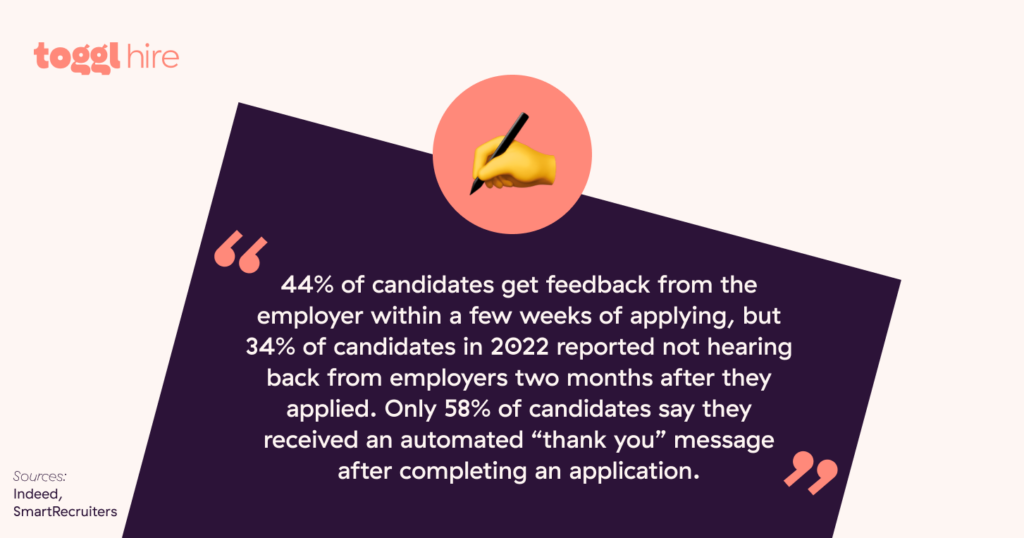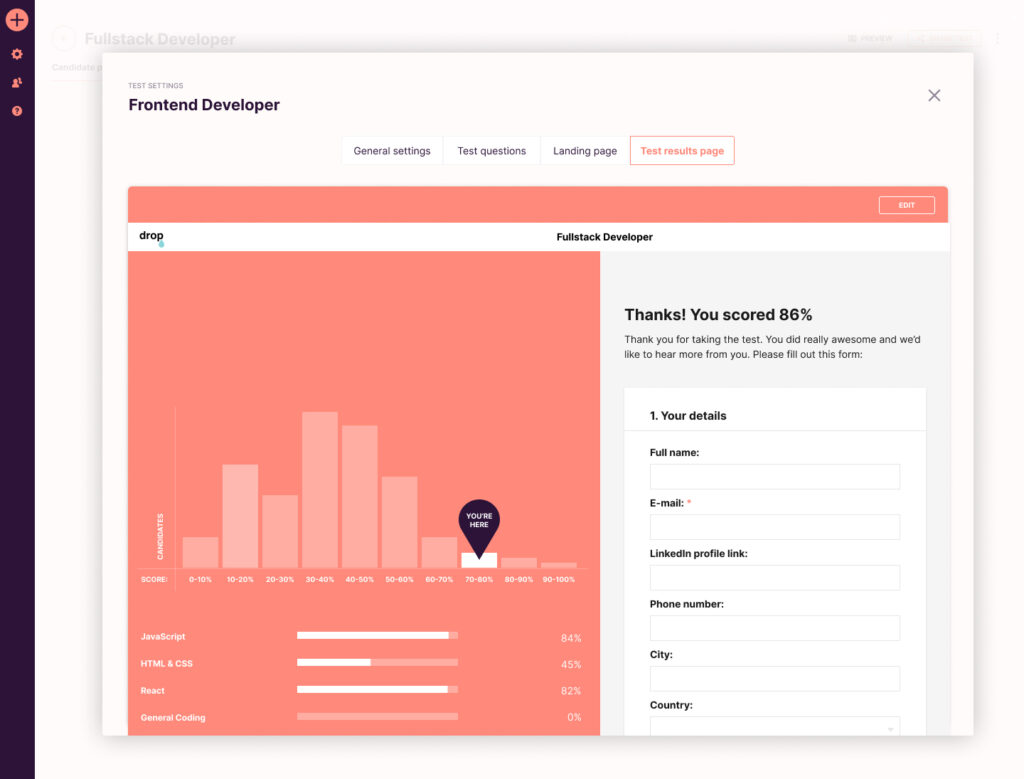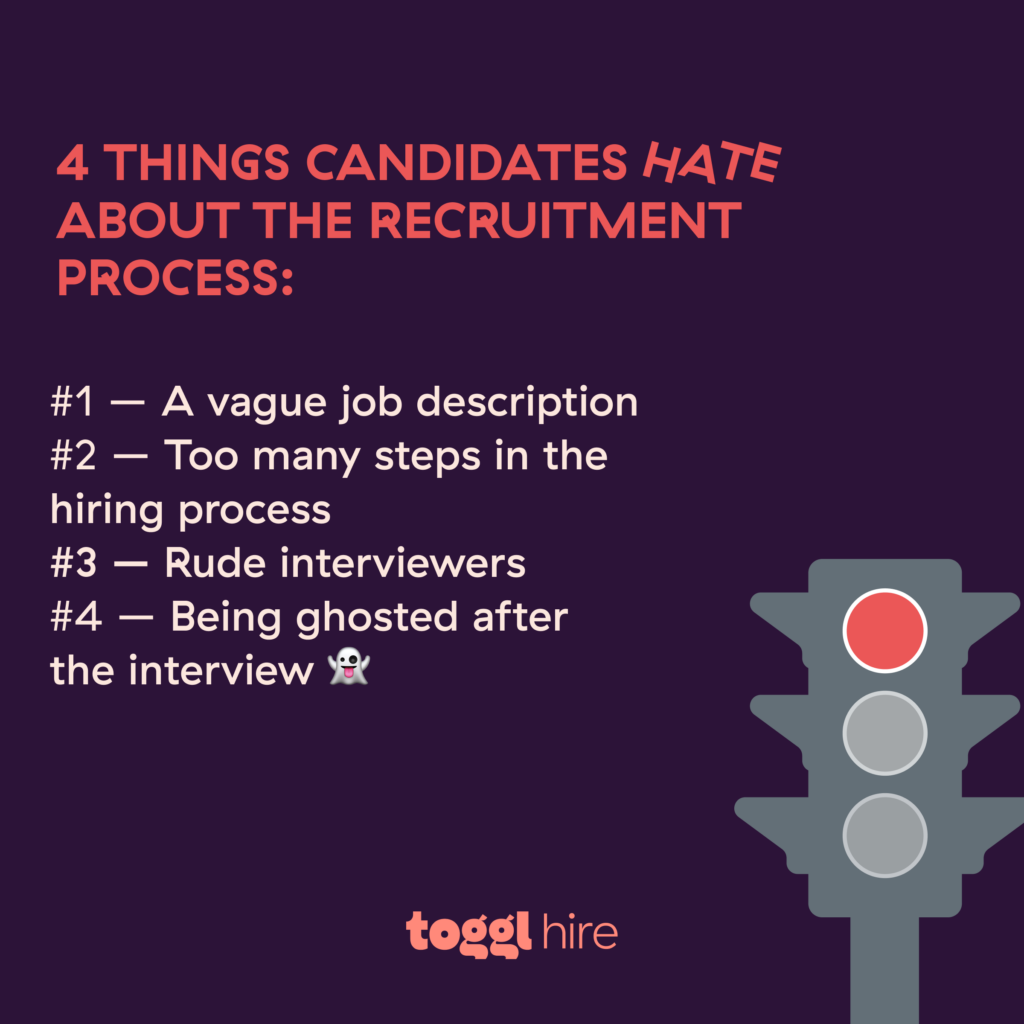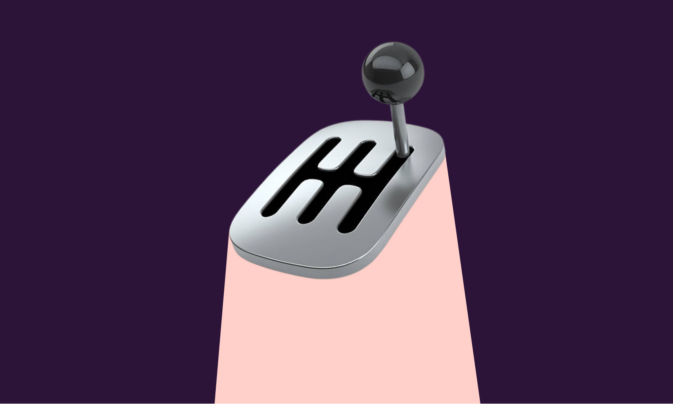Writing a rejection letter can be stressful.
Nobody likes being rejected, and depending on how you craft your message, you could end up with an upset but understanding candidate who becomes a fan of your brand and how you handle candidate communications. Or, you could end up with an angry applicant who takes to sites like Glassdoor to talk about their poor experience.
Regardless, sending rejection letters to applicants who don’t make the final cut is an inevitable part of the hiring process. And since rejection letters impact the candidate experience, employer branding, and long-term talent acquisition strategy, they’re pretty important.
So, how do you craft a polite rejection letter in a way that’s considerate and doesn’t twist the knife any further? Luckily, learning how to write a rejection letter is more about following a good recipe than needing any great creative writing skills.
TL;DR — Key Takeaways
- When rejecting a candidate, showing appreciation for the time and effort candidates put into applying can leave a positive impression of your brand, which can not only help boost your employer branding long-term but also leave the door open for both parties to work together in the future.
- Saying “no” in a thoughtful way can actually make people like your company more. They’re likely to spread the word about how you handle things gracefully, which can attract more great candidates down the line.
- Sharing some positive feedback can help rejected candidates see the silver lining. Learn how to offer constructive criticism in a way that helps guide them on what to polish for their next shot, without adding any sting.
- The more you’ve interacted with someone, the more personalized your parting words should be. Tailoring your message for different stages of the process shows you care about the connection, however brief.
- It’s tempting to want to soften the blow and offer a large explanation or apology up front, but it’s often better to jump straight to the point and then follow up with positive notes, constructive feedback, or more information.
What is a rejection letter?
A rejection letter is a formal notification from an employer to a job candidate that they will not be progressing to the next stages of the selection process, usually in the form of an email.
The importance of the rejection letter
While rejecting applicants or sending rejection letters probably isn’t your favorite part of your role (at least we hope not!), they are important for a few reasons:
- Building relationships in your talent pool: A well-written and polite rejection letter can demonstrate that you appreciate the candidate’s time and effort, which can go a long way in building a relationship with them (and other potential candidates they chat with). Plus, they’ll be more likely to allow you to retain their details in the talent pool for future openings.
- Improving your candidate experience and employer brand: Applicants want to feel that your company appreciates their efforts, even if they didn’t get the job position. Then they’ll be more likely to recommend your company to other candidates (or re-apply at a later stage). If you can get the letter to them in good time, too, then you’re also supporting a good candidate experience.
- Give and receive feedback on your interview process: Provide applicants with valuable feedback on why they were unsuccessful for a particular role, and offer job-seeking advice on how they can improve. This gesture makes it easier to solicit feedback on the interview process from them, too, which you should take and implement to improve your own processes.

But how do you create a meaningful rejection letter after an interview when you have a looming pile of candidates to communicate with and other job tasks to handle?
Rejection letter templates are one tool that can help automate the most time-consuming aspect of the process, which is starting from scratch with a blank page.
How to write a great rejection letter (+ rejection letter templates)
We know it can be difficult to treat each candidate as an individual after your 100th or 1000th letter! So, here are a few tips (and rejection letter samples) to help personalize, automate, and reduce the stress of the process.
Keep the subject line short and simple, and try one of these popular formats:
- Your application with [company name]
- [Job title] — Your application
- Interview feedback for [candidate name]
1. Get straight to the point
Your candidate is already expecting an email from you about their application for the position. So, get straight to the point in the first paragraph.
Don’t make them read five paragraphs before you get to the crux of the email (which is that they ultimately didn’t get the job). And, when you do get to the point, it’s important to communicate in a compassionate way.
Dear [Candidate],
We appreciate your interest in [company name] and the [position] role. After careful consideration, we’ve decided not to take your application through to the next stage.
Though we were impressed with your [Skills/Experience], we have selected another candidate who better matches the skills and experience we are looking for with this position.
Thank you for the time and effort you’ve put into your application. We wish you success in your job search.
Sincerely, [Your Name]
2. Give them feedback
Many companies don’t provide feedback to unsuccessful applicants to prevent possible litigation. However, even a little (positive) feedback can go a long way.

For those who want to go the extra mile, inform the applicant why they weren’t a good fit for the particular position or job description. Most applicants will appreciate the positive feedback so they know what areas of their knowledge, education qualifications, or experience to work on.
Dear [Candidate],
Thank you for your taking the time to apply for the [job title] role at [company]. Your application was unfortunately unsuccessful.
While we’ve decided to move forward with another candidate, it was not an easy decision. Your [x] years’ experience in [industry/department] and particular skills in [job function] are definitely impressive. But for this role, it is also crucial that the candidate has in-depth knowledge of [area of specialty/software tool].
With that in mind, we’d hate to lose touch with you, as there may be a future role that matches all the great things you have to offer. May we retain your details in our database?
In the meantime, we wish you all the best in your job search and success on your career journey.
Sincerely, [Your Name]
Bonus Tip: Avoid Criticism
Avoid being critical with your candidate feedback, as this will probably create a negative impression, a bad candidate experience, and ultimately harm your employer brand.
While the above rejection letter template is a good example of positive, constructive feedback, here’s an example of what a critical tone looks like:
Your poor communication skills and lack of relevant scenario examples during the interview were major red flags for us. It is essential for a [Position] to be able to effectively communicate and provide examples of their experience and skills.
3. Write different rejection letters for each stage in the hiring process
You wouldn’t break up with someone you’ve dated for two months the same way as a partner of five years. The same applies here. There should be a different rejection letter template for every stage of the hiring funnel.
The further along the candidate is in the process, the more personalized and detailed the letter should be.
The level of detail in the core message should increase depending on how far the candidate has made it in the process, such as after the initial phone screen or pre-employment skills assessment, after a manager interview, and after a homework assignment.
Let’s take a look at some more rejection letter samples depending on the stage of the interview process the candidate made it to:
⭐ After a screening skills test
Thank you for your taking the time to apply for the [position] role at [company]. Your application was unfortunately unsuccessful. We wish you luck with your job search.

⭐ After the phone screen or interview
Thank you, [candidate name], for taking the time to meet with [manager name] and share more information about your [job title] skills and experience. Unfortunately, we will not be taking your application to the next round.
While we appreciate your efforts, we have decided to move forward with another candidate who has more experience in [skill/software] for this position.
We wish you the best of luck with your job search.
⭐ After a homework assignment
Great job with your homework assignment, [candidate name]. We can see that your [role/task] skills are really well-honed. You know your stuff!
And while you do have what it takes for this type of position, we have chosen to go with another candidate. It was not an easy decision, but we felt they were a better fit due to their particular proficiency in [skill] and their [another point tied to the job spec]. Unfortunately, your application will not be taken further.
However, we’d hate to lose touch with you, as there may be a future position that matches your fantastic skill set. May we retain your details in our database?
In the meantime, we wish you all the best in your job search and success on your career journey. Feel free to reach out if you have any further questions.
4. Let the candidate know that more positions will open in the future
A candidate may have been unsuccessful with a specific role, but if they’re really good, you want to keep their personal details for future opportunities. This part of the email could be something along these lines:
We appreciate your time and efforts and see your skills shining through. So we’d hate to lose touch with you. May we retain your details in our database for future opportunities that match your skill set?
5. Wish them good luck
Always include this part. It’s just good manners (and the candidate will definitely notice if it’s not there), and an essential part of the candidate experience for any potential employer. Forbes says it like it is:
Job applicants who do not receive a job offer are 80% more likely to apply again if they already had a positive impression of the hiring organization.
Forbes | Source
6. Send it as soon as possible
If you’re sending a rejection letter, send it as soon as possible. This way, you’re saving time and respecting everyone’s efforts in the process. Candidates want to know ASAP whether they’ve got the position or not so they can move on with their job search.
- 44% of candidates get feedback from the employer within a few weeks of applying
- while 37% of candidates get it within one week
- and just 4% of candidates get it the same day
Since the average recruitment process often takes way longer than human resources or job-seekers would like, speeding up your response time can give you a big advantage over the competition in terms of candidate experience.
Skills assessments can help employers automate the screening process and provide instant feedback to candidates!

7. Personalize your letter
After spending an hour or more on a job application, candidates want to know their efforts and time are valued. You can do that by personalizing your communication to unsuccessful applicants. At a minimum, include their name and the job title they applied for. And the further down the hiring process they get, the more personalized the letter.
8. Thank the candidate
At the very beginning, make sure to thank the applicant for applying to your company. After all, they’re spending their valuable time and energy applying for your job opening and trying to make a good impression in an interview.
What else to know about rejection letters
If that didn’t answer all your niggling questions about how to write a rejection email, we should have it covered in this Q&A.
Should I write a rejection letter to every candidate?
Yes! Automate this process as much as possible using a rejection email template. Early-stage candidates can receive a less detailed email, while shortlisted candidates who attended an interview deserve more feedback and personalization (and well wishes for future career endeavors).
What’s the best way to close a rejection email?
Ugh. This is often one of the hardest parts. Here are a few ways to end the email.
- “Thank you for applying to join the [company] team. We appreciate the time and effort you’ve invested in the application process.”
- “Though we get that this may be disappointing news, we hope you continue your job search and wish you good luck in your career path.”
- “While we will not be moving forward with your application for [position], we hope you continue to apply for other positions. Thanks for all the time and energy you’ve put into your application, and we wish you the best going forward with your career.”
- “Thank you for your application. While we will be moving forward with other candidates, we wish you good luck in your job search.”
What are some of the most important things to keep in mind while drafting a rejection letter to a job applicant?
- Include their name and the job title
- Get to the point quickly
- Don’t criticize the applicant
- Use different templates for the different hiring stages
- Ask permission to keep them in your talent database for future positions
- Stay clear of fake feedback—better nothing than made-up or copy-and-paste reasons
- Ask for feedback on your recruitment process, especially for post-interview rejection
Should we send a rejection email to internal candidates?
Yes, but an internal candidate rejection will be a bit different than one for external candidates in these ways:
- Provide a more detailed explanation of the decision: They’re more familiar with the company’s needs, processes, and necessary qualifications.
- Share detailed, open feedback: If they want to grow in the company, open feedback and detailing their next steps will help them better plan any internal mobility moves and general career growth.
- Strike the right tone: You need to be professional but bear in mind that you already have a relationship with the person.
How can a bad rejection email backfire on the employer?
A badly written rejection email can affect your company negatively in ways such as:
- Creating a bad rep as a company
- Possible legal consequences if the content is viewed as discriminatory or inappropriate
- Damage the relationship between the candidate and the employer
- Negative impact on current employee morale if they learn about the situation
Go forth and write better rejection letters
Unfortunately, regardless of how well-crafted your rejection letter is, it’s still a rejection. Nobody likes to be rejected, so even if you do it “right,” you still might feel bad about having to reject a great candidate or receive some upset replies to your emails.
Take these helpful tips to heart so you can communicate to unsuccessful applicants in a way that is caring and practical. That way, you’ll be building better relationships, growing your candidate pool, and maintaining a positive employer brand for your company (plus, it’s just the right thing to do!).
Don’t forget that you can automate the time-consuming parts of talent acquisition with skills assessments, so your team has more time to communicate from human to human. To see how that works (and to check out our email templates), create a free Toggl Hire account now!

Juste loves investigating through writing. A copywriter by trade, she spent the last ten years in startups, telling stories and building marketing teams. She works at Toggl Hire and writes about how businesses can recruit really great people.






